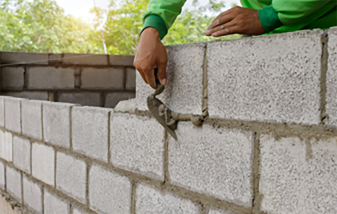
Dec . 15, 2024 00:16 Back to list
building coating adhesive hpmc
Building Coating Adhesives The Role of HPMC
In the construction industry, the choice of materials plays a crucial role in determining the durability, efficiency, and aesthetic appeal of buildings. Among the many materials used in construction, adhesives are key components that contribute to the bonding of various layers and aspects of construction projects. One additive that has gained considerable attention in recent years is Hydroxypropyl Methylcellulose (HPMC), a versatile and valuable compound in the formulation of building coating adhesives. This article will explore the properties, benefits, and applications of HPMC in building coating adhesives.
What is HPMC?
Hydroxypropyl Methylcellulose (HPMC) is a cellulose ether derived from natural cellulose. It is a white or off-white powder that is soluble in cold water, forming a viscous, gel-like solution. HPMC is widely used in the pharmaceutical, food, and construction industries due to its excellent properties, including water retention, thickening, adhesive, and film-forming abilities.
In the context of building coating adhesives, HPMC acts as a key functional ingredient that enhances the performance and usability of the adhesive formulations.
Properties of HPMC
1. Water Retention One of the most notable properties of HPMC is its ability to retain water. This characteristic is crucial in construction adhesives, as it helps to maintain the necessary moisture levels during the curing process, ensuring that the adhesive bonds effectively to the substrate.
2. Thickening Agent HPMC serves as an effective thickening agent, which is vital in creating the desired viscosity for intuitive application without drips or runs during application. This quality enhances the workability of the adhesive, making it easier for contractors to apply with precision.
3. Film Forming When HPMC is applied, it forms a protective film as it dries, which contributes to the durability and longevity of the adhesion. The strong film helps resist various environmental factors and enhances the overall robustness of the coating.
4. Non-toxic and Eco-friendly Being a natural polymer, HPMC is non-toxic and environmentally friendly. This makes it an attractive option for both manufacturers and consumers looking to reduce their chemical footprint.
building coating adhesive hpmc

Benefits of Using HPMC in Building Coating Adhesives
1. Improved Bond Strength The inclusion of HPMC in adhesive formulations enhances the bond strength, providing a robust attachment between substrates, such as concrete, wood, plastic, and metal.
2. Enhanced Application Properties The improved workability and thickening property of HPMC allow for better dispersion and application, reducing the likelihood of air bubbles and ensuring a smooth finish. This can translate into significant time savings during installation.
3. Resistance to Cracking and Shrinkage HPMC helps minimize the risks of cracking and shrinkage often associated with adhesives. This ensures that the integrity of the bond remains intact over time, even under varying environmental conditions.
4. Compatibility with Other Materials HPMC can be blended easily with various other additives and formulations, allowing manufacturers to create tailor-made adhesives that suit specific project requirements. Whether it's for interior or exterior applications, HPMC can be adjusted to meet performance needs.
Applications in the Construction Industry
HPMC is used in a variety of building coating adhesive applications, including
- Tile Adhesives In tile setting, HPMC improves the adhesion of tiles to floors and walls, providing unparalleled support against moisture and temperature changes. - Exterior Coating to Walls For exterior compositions, HPMC enhances the weather resistance and longevity of coatings applied to buildings. - Render and Plaster In masonry and plastering applications, HPMC ensures a smooth application and robust adhesion of materials.
Conclusion
In summary, Hydroxypropyl Methylcellulose (HPMC) plays an indispensable role in the formulation of building coating adhesives. Its properties, such as water retention, thickening, and film-forming capabilities, make it a superior additive for enhancing the performance of adhesives used in various construction applications. The growing demand for sustainable and effective building materials underscores the importance of HPMC, showcasing its potential to improve not just the initial application but also the long-term durability and effectiveness of construction projects. As the industry evolves, HPMC remains a cornerstone in the pursuit of high-performance, environmentally friendly construction solutions.
-
Versatile Hpmc Uses in Different Industries
NewsJun.19,2025
-
Redispersible Powder's Role in Enhancing Durability of Construction Products
NewsJun.19,2025
-
Hydroxyethyl Cellulose Applications Driving Green Industrial Processes
NewsJun.19,2025
-
Exploring Different Redispersible Polymer Powder
NewsJun.19,2025
-
Choosing the Right Mortar Bonding Agent
NewsJun.19,2025
-
Applications and Significance of China Hpmc in Modern Industries
NewsJun.19,2025







